Last week in this column I mentioned that I’m dedicating the month of June to watching and reviewing a few Eclipse Series titles focused on themes of marriage, being that this is a traditional month, in Western societies anyway, for those vows to be exchanged. We’re more than halfway through the month though and I still have two more films beside this week’s selection to cover before the month is up, plus a new Eclipse collection due for release next week that I want to watch and comment on before it’s overtaken by other hot new Criterion products, so I gotta get a move on. I guess that’s what happens when one is busy living the life of a married guy, rather than just writing about other people’s marriages. The first entry in this series was 1932’s One Hour With You, a lighthearted romp featuring the famous Lubitsch touch. This week’s selection is from around the same time, but from literally half a world away. From Eclipse Series 26: Silent Naruse, I’m taking a stroll down Street Without End, Mikio Naruse’s final picture before he entered the realm of talkies.
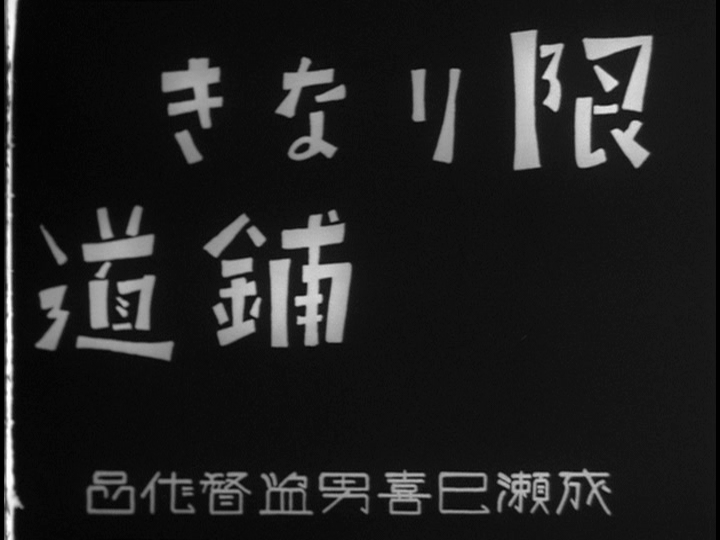
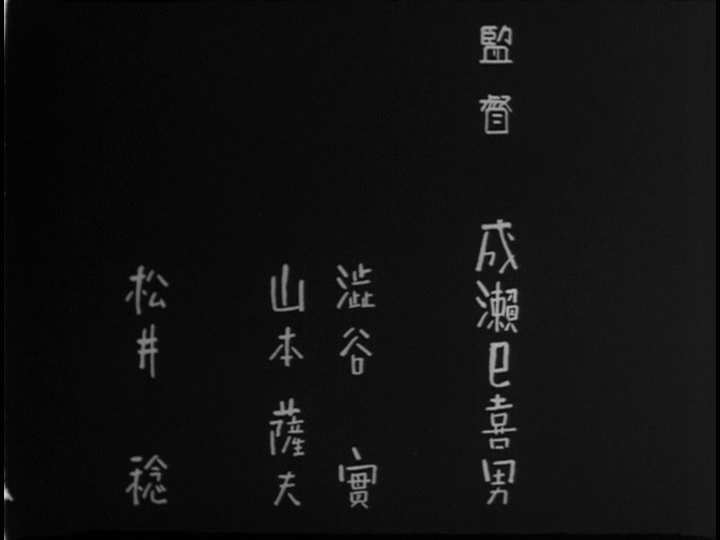
To date, this is only the second Naruse film I’ve seen, the other being his earliest surviving work, Flunky, Work Hard, reviewed here a couple months ago right around the time that set hit the retail shelves. So I’m going to leave it to others to spell out the background on this highly admired director who’s still badly under-represented in regard to the availability of his work here in the USA. The main indication of progress between the two films that stands out to me are, one, the length of the film – Street Without End is a full length feature whereas Flunky was a half-hour short subject – and two, Naruse has by this time (1934) settled into what would become the defining genre of his career, the woman’s picture, with a prolonged focus on the travails of women getting by the best they can in a society more than comfortable in its assumptions of patriarchy and male privilege.
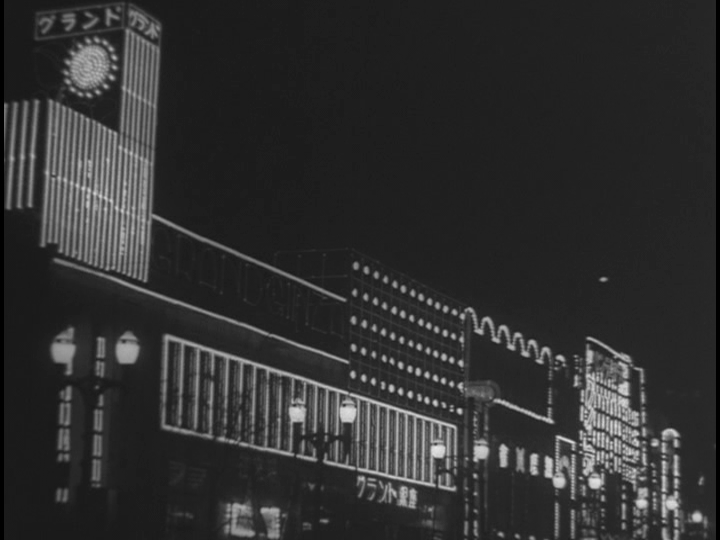
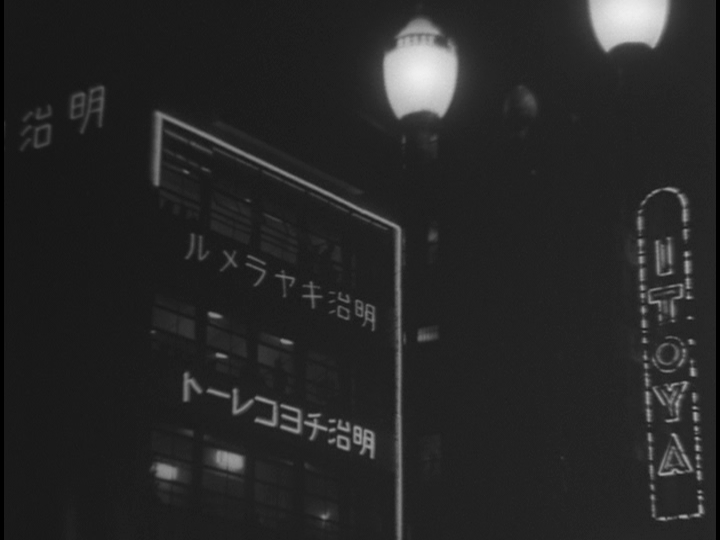
The idea behind the title Street Without End is concretely illustrated by the book-ending shots of Tokyo’s Ginza as it looked in the early 1930s, still famous for over the past 100 years as the hub of everything modern and upscale in Japan’s greatest city. The rapid cutting shots of neon lights, streetcars, anonymous crowds and steady commerce gives the impression of this being an Everywoman type of story, focusing neither on someone of great social prominence nor caught up in an especially piteous tragedy, almost as if Naruse and his fellow story-tellers had just plucked a life at random from the thousands whose paths cross the Ginza everyday and placed it on the screen for our examination.
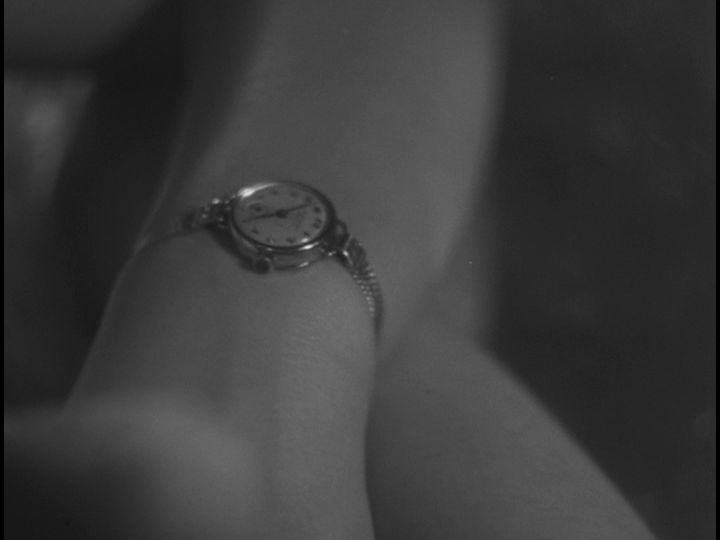

Before I get into the story, let me just offer a few words about elements of Naruse’s craft that stood out to me. He has an intriguing fascination with the space around his characters, often framing them off-center and in the lower corners of the frame, with an emphasis on the space above their heads seemingly pushing down on them. I don’t provide some of the more striking examples here because they simply don’t look that compelling when reduced to half a column width. He’s also fond of abstract cutaways to streetlights, architectural details and gesturing hands that sometimes intrude rather jarringly and inexplicably to most anyone used to Hollywood narrative conventions. The effects don’t always succeed by modern standards, and some of the splices are quite rough, probably due to the film’s age as well as relatively crude editing techniques of that time, but they definitely indicate that Naruse was a creative, searching talent continually looking to take risks and explore new methods for drawing his audience into the lives of his lead characters. Most successful are his powerful tracking shots where he pulls in on faces clouded over in pensive scrutiny, punctuating the melodrama with clear indications of inner resolve that speak eloquently in a setting where the spoken word is absent.

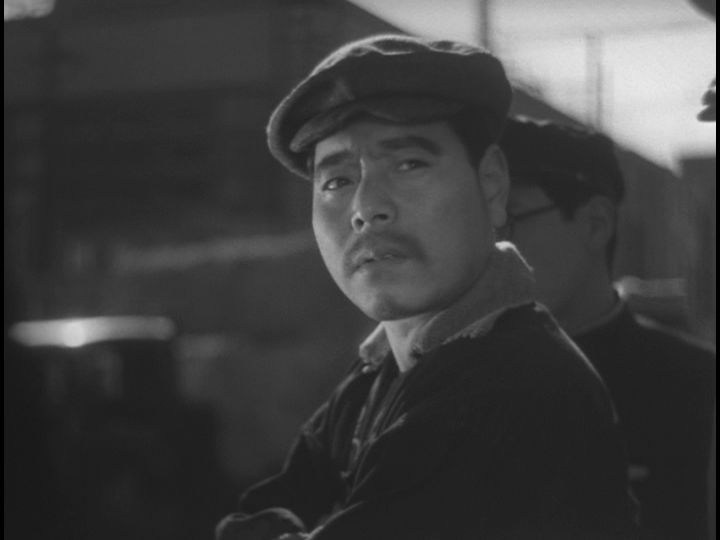
Another small pleasure that comes with watching enough of these 30s era Japanese films is the unexpected appearance of familiar faces made famous at this time by their roles in works by Yasujiro Ozu. Takeshi Sakamoto and Tomio Aoki popped up ever so briefly here, much to my delight. They made an indelible impression as a down-on-their-luck father-son combo in Ozu’s Passing Fancy, if you’re interested in seeing what made them so memorable and instantly identifiable to me when they made their cameos.
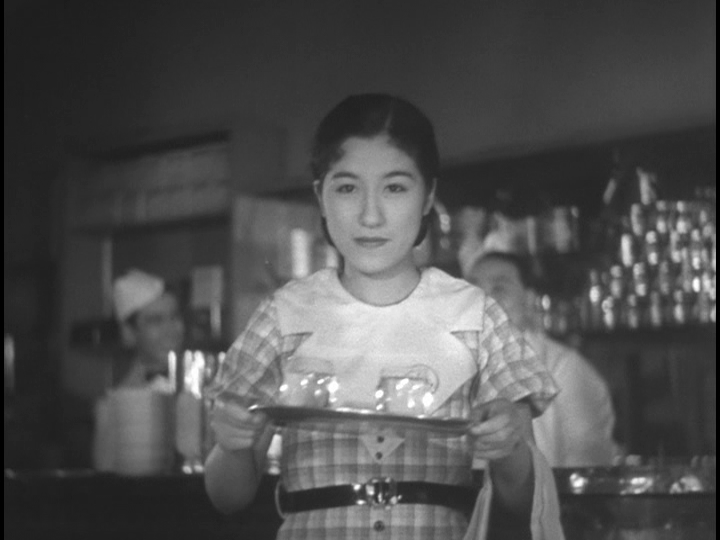
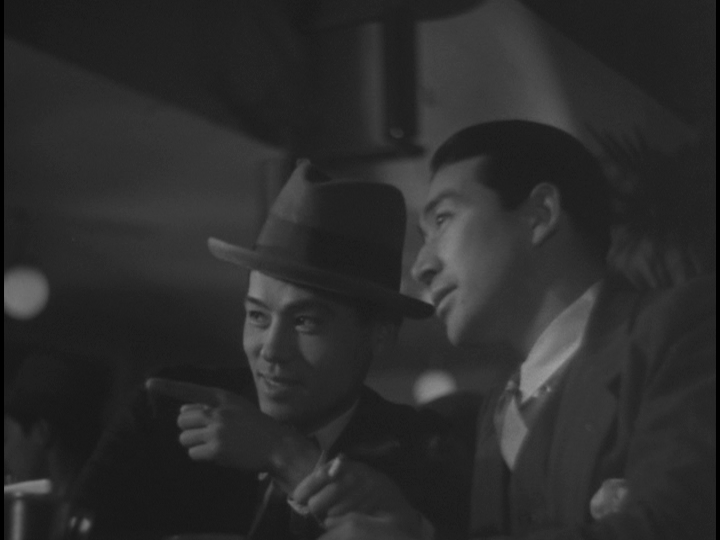
Let’s get to the main theme of Street Without End then. It’s the story of Sugiko, a common working class girl employed as a waitress in a trendy pancake shop on the Ginza, where the locals are still trying to figure out what to do with that little dollop of butter that the cook drops on the top of that short stack she just delivered. Sugiko is a good looking woman, though a bit on the brooding side, and she’s quickly spotted by a couple of talent scouts on the lookout for a fresh new face to replace a starlet who’s just decided to retire from showbiz.
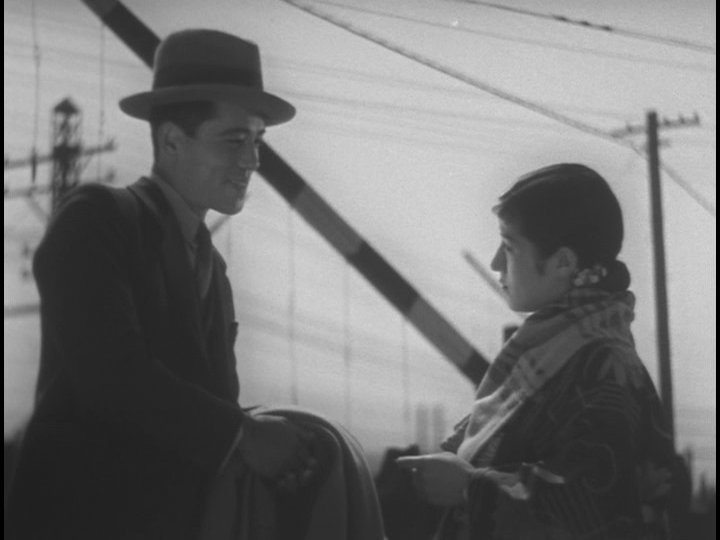
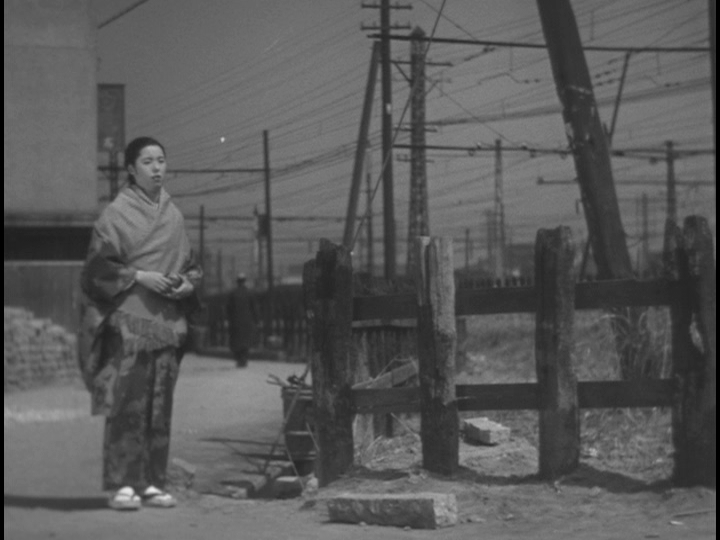
We quickly learn that not only is Sugiko forced by circumstances to be self-sufficient, she also has to provide for a brother who’s out of work and heading into the city to live with her until he can line something up. Knowing that her waitressing wages are hardly enough to keep them both afloat, the abrupt offer to become a movie actress has its appeal, but Sugiko isn’t easily starstruck and she asks for time to think it over. In the meanwhile, she also has to weigh in the semi-serious entreaties of Harada, a suitor who has asked her to marry him, though even that offer may be more driven by a desire on his part to escape the fate of an arranged marriage that awaits him back in his more traditional hometown. Sugiko knows that marrying Harada will have its own share of hardships, and their feelings for each other don’t seem especially strong. Naruse, as he will make crystal clear later on in the picture, is dealing pointedly with the tensions between the established “feudalistic” customs that his audience knew and took for granted, and the just-emerging possibilities of marrying, and behaving more generally, according to one’s passions and innate desires. Especially as far as women were concerned, this was new cultural territory to be explored, and a main undercurrent of Street Without End, even in its subplots involving Sugiko’s friends, is how the tentative exploration of these new freedoms can so quickly unravel when the oppressive demands of archaic customs interfere and smother our aspirations.
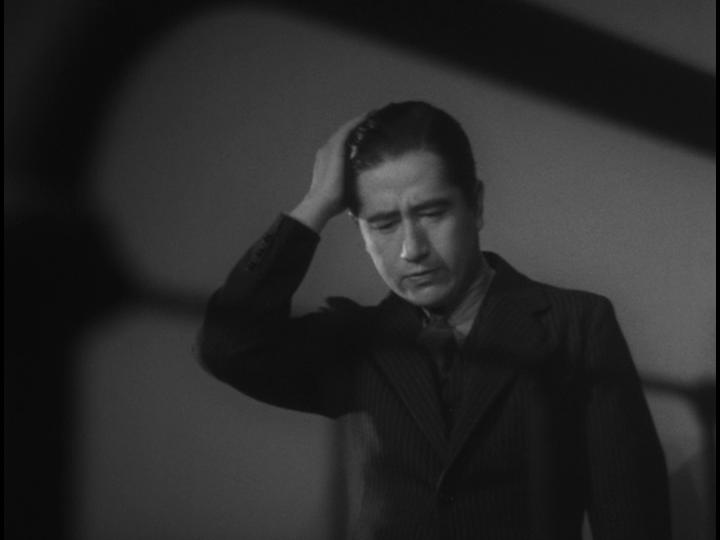
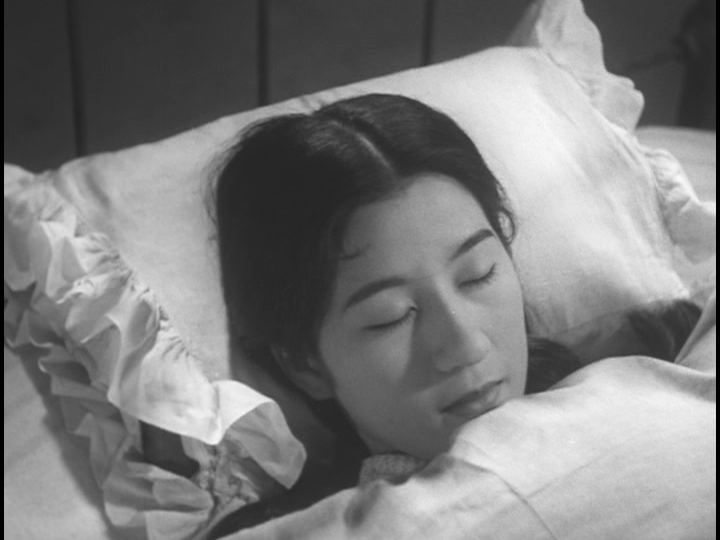
Just as the audience begins to assume that Sugiko’s dilemma is found in the tension between an acting career and the acceptance of Harada’s marriage proposal, fate throws a crazy twist her way (and ours) when she is struck by a car while lost in thought as she walks across Ginza. The driver who runs into her is Yamanouchi, a businessman from a prominent family who is guilt-stricken at the mishap, and perhaps just a bit worried at the trouble it might create for him and his family. Sugiko is not critically injured, and Yamanouchi transports her in a taxi to the hospital, with Harada just coincidentally happening to see her resting in his arms in the back of the cab as they drive by. Not knowing that she’d just been hit by a car, Harada assumes the worst and returns to his home to accept his miserable, or at least predictable, fate. He’ll make one very brief appearance later in the film, an important one but easy to miss, it’s so abruptly tossed in there. So keep your eyes peeled!
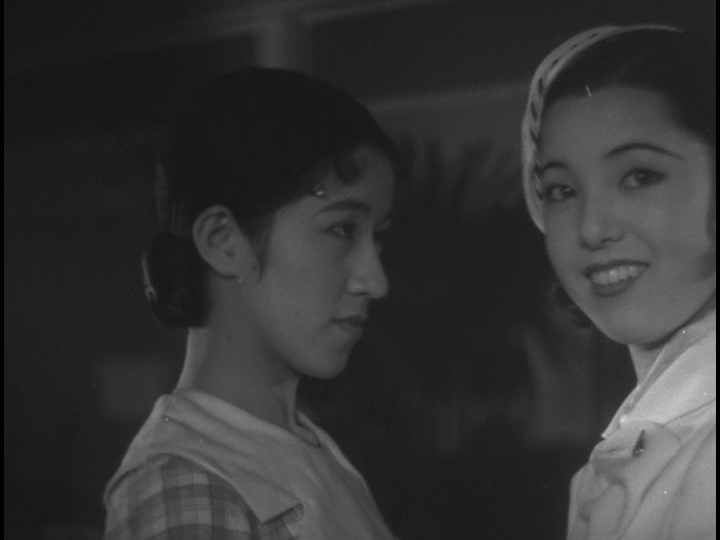

For reasons that are never really made quite clear, Yamanouchi falls in love with Sugiko and seeks to fill the void left by the departed Harada. One can speculate that he’s motivated more by pity for a woman who he came close to killing or badly injuring, but the more we get to know about him, it seems more likely that he’s looking for a woman of milder and less judgmental temperament than the mother and sister who berate him so mercilessly at home. And Sugiko’s recovery closes the door of opportunity for her to become an actress, as her friend, a sharp looker herself, has accepted the assignment. Recognizing that marriage to a man of Yamanouchi’s status would bring with it material comfort and security unlike anything she’s ever known, Sugiko has to take seriously the possibility that this is her big chance for happiness and success in life.
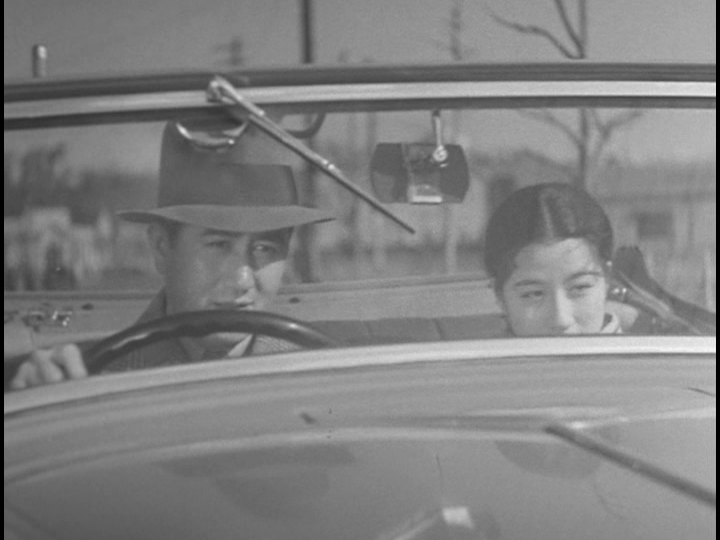
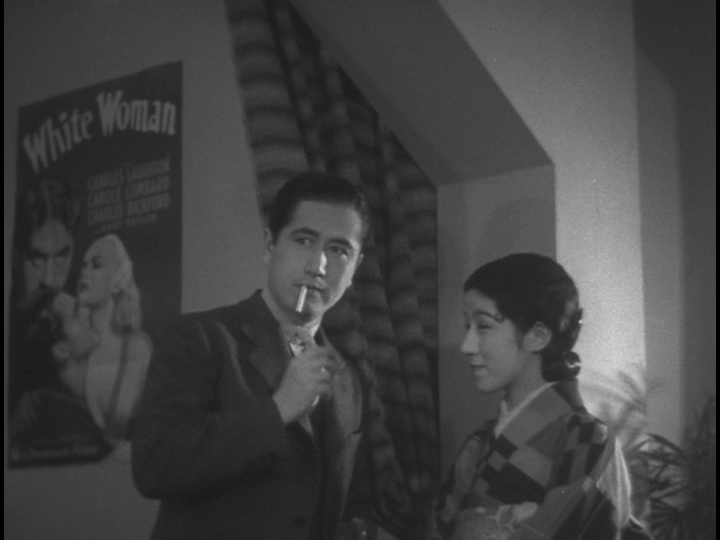
So we get a quick dash through the courtship of Yamanouchi and Sugiko, including a trip to the movies where we get to see the audience watching a scene from Lubitsch’s The Smiling Lieutenant, the one title from that Lubitsch Musicals Eclipse set that I haven’t gotten around to reviewing quite yet (but trust me, I will!) It’s a fascinating bit of film-within-a-film, especially as we see the crowd’s reaction, watching with almost grim seriousness as Maurice Chevalier and Miriam Hopkins (Trouble in Paradise) comically flirt and fuss with each other on screen. Apparently the audience doesn’t quite get the jokes, but they’re an affluent crowd, privileged to see the latest in imported entertainment and content just to make the scene. But we also see that it’s an awkward fit for Sugiko.
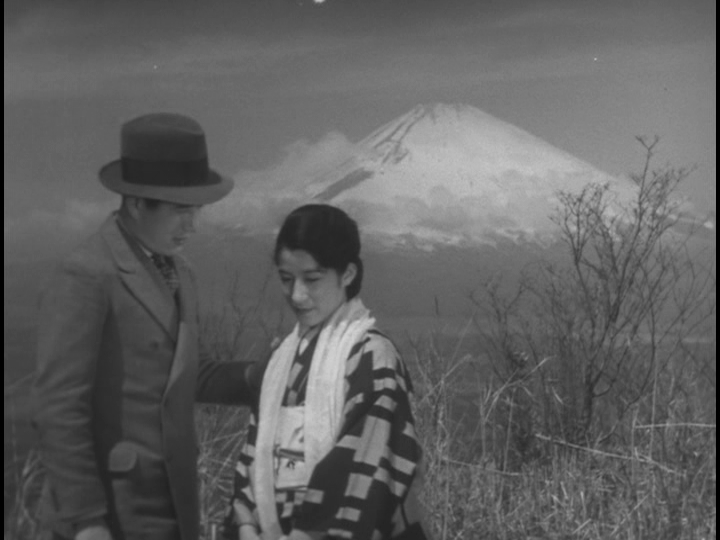
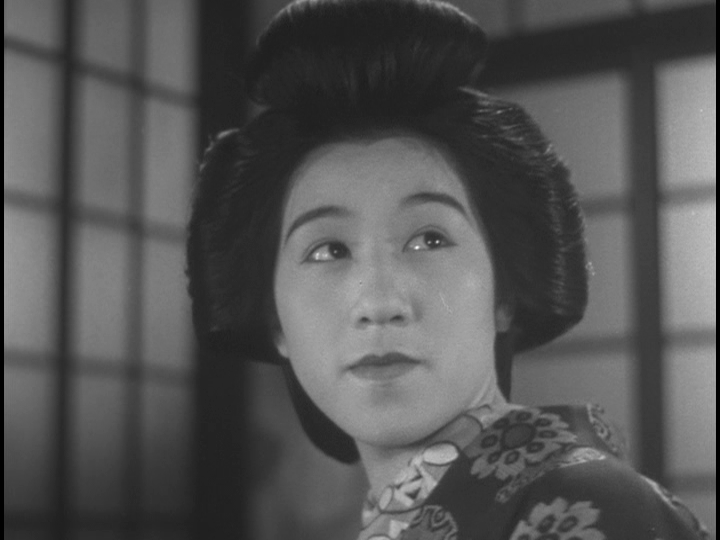
Still, love can be blind and people can be pretty determined when it comes to the pursuit of what they think will lead to happiness. Yamanouchi makes all the requisite moves, including a proposal with a view of Mount Fuji, and soon enough, Sugiko adopts the hair- and lifestyle of a respectable bourgeois housewife.
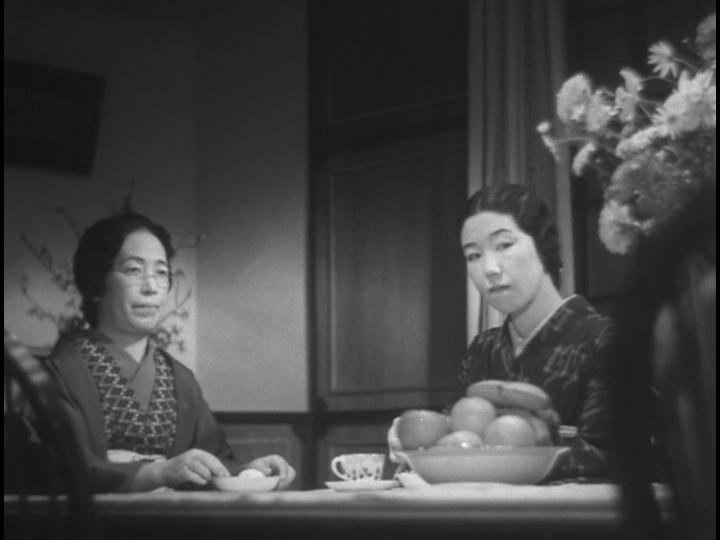

What she can’t so easily adopt though is the attitude and mannerisms that others expect of her, especially Yamanouchi’s mother, a stern matriarch who never passes up an opportunity to criticize the daughter-in-law she sees only as an unworthy bumpkin, or the spiteful sister who seems to thrive only on her own incessant cruelty. Naively hoping that the illusion of love that they’ve expressed for each other will provide a shield for the couple from the intrusions of mother and sister, Sugiko soon comes to realize that Yamanouchi himself is no match for their onslaught, and that he pursued and married her for the wrong reasons. It’s at this point that Naruse makes his bold declaration, spelling it out plainly through the following intertitle: EVEN TODAY, FEUDALISTIC NOTIONS OF FAMILY CRUSH THE PURE LOVE OF YOUNG PEOPLE IN JAPAN.
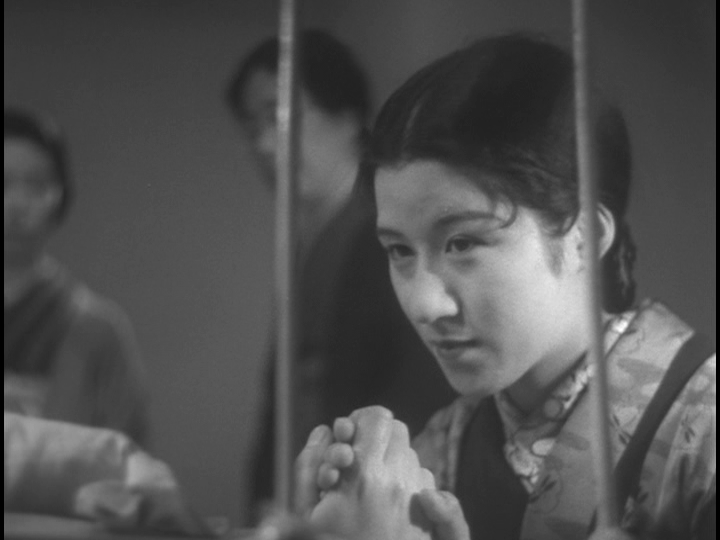
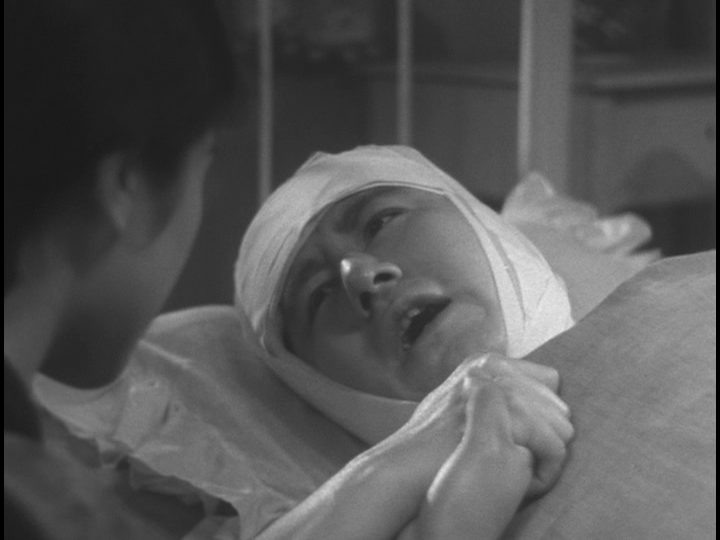
I’m not so convinced that what Yamanouchi and Sugiko found together, even in the earliest and most idealistic phase of their relationship, was “pure love,” but whatever the case may be, they don’t get much time to work through the difficulties that those feudalistic notions created. As Yamanouchi falls into the familiar pattern of “late nights at the office” and returning home drunk in the wee hours (yes, some traditions really do transcend major cultural barriers!), Sugiko reconnects with the strong interior core that she’d shown so often over the course of Street Without End. She decides to leave him, giving him time to consider what marriage to her is actually worth and what it means to Yamanouchi, as he’s shown himself unable to adequately stand up to the insults that his female relatives heap upon the couple. Unfortunately, Yamanouchi uses the separation as license to continue in his indulgent ways, leading to another car accident and a reversal of roles when the relationship was first established at bedside in a hospital room.
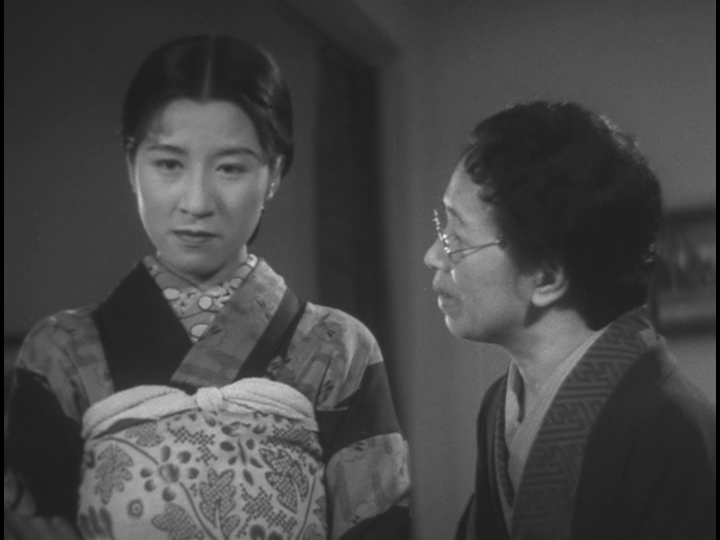
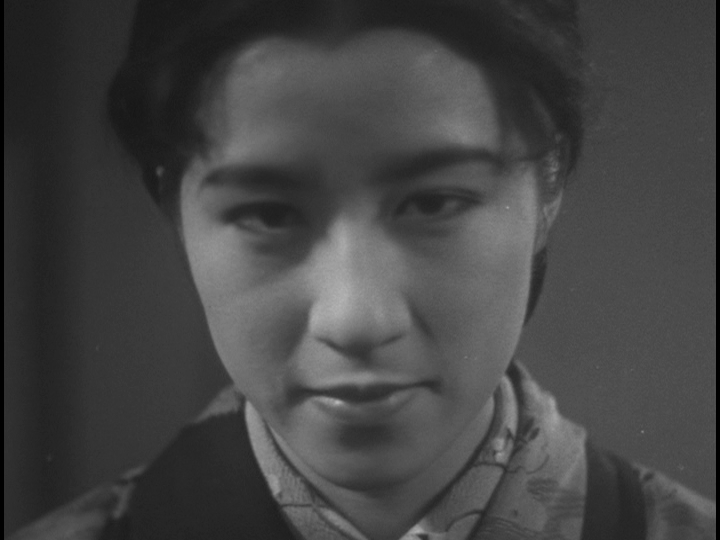
The denouement to this slice of vintage Japanese melodrama is powerful enough to transcend the soap opera elements of the story, a script that was reportedly kicked around a number of directors who were all reluctant to adapt the popular novel that Street Without End was based upon. And I can understand why. The plot’s reliance on outlandish coincidence and heavy-handed moralistic paybacks requires deft handling to avoid collapsing into some kind of maudlin tearjerker. Naruse wisely sidesteps such peril, opting instead to make Sugiko more a role model of female empowerment and less an object of tragic pathos. In this respect, Sugiko is not too distant from Ayoko, the protaganist of Mizoguchi’s Osaka Elegy, made two years later. Though Sugiko isn’t nearly as “fallen” from society’s good graces as Ayoko, both find themselves having to stand stronger on their own two feet than women who opt, at whatever cost, for the stability and social covering that comes with conventional marriage.
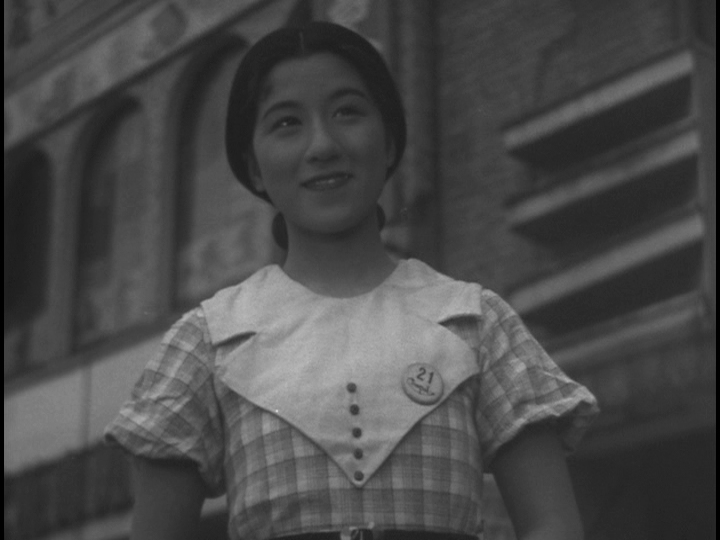

Sugiko’s fate, as Street Without End reaches its conclusion, is neither especially happy nor sad; indeed, she winds up pretty close to where we first met her. She’s able to smile ever so fleetingly as she resumes her working-class routines on the Ginza, and reconnects with the people who’ve been her best friends all along, but now more deeply aware than ever of the deeply established track that her life has been on all along. That realization, driven home in another of Naruse’s paired couplets of early and late scenes that echo one another, comes crashing down on Sugiko in a slow, fluttering, twenty second fade to black as we bid her farewell and she melds again back into the crowded Ginza cityscape.






![Bergman Island (The Criterion Collection) [Blu-ray]](https://criterioncast.com/wp-content/uploads/2022/11/bergman-island-the-criterion-collection-blu-ray-400x496.jpg)
![This Is Not a Burial, It’s a Resurrection (The Criterion Collection) [Blu-ray]](https://criterioncast.com/wp-content/uploads/2022/11/this-is-not-a-burial-its-a-resurrection-the-criterion-collection-blu-ray-400x496.jpg)
![Lars von Trier's Europe Trilogy (The Criterion Collection) [The Element of Crime/Epidemic/Europa] [Blu-ray]](https://criterioncast.com/wp-content/uploads/2022/11/lars-von-triers-europe-trilogy-the-criterion-collection-the-element-of-400x496.jpg)
![Imitation of Life (The Criterion Collection) [Blu-ray]](https://criterioncast.com/wp-content/uploads/2022/11/imitation-of-life-the-criterion-collection-blu-ray-400x496.jpg)
![The Adventures of Baron Munchausen (The Criterion Collection) [4K UHD]](https://criterioncast.com/wp-content/uploads/2022/11/the-adventures-of-baron-munchausen-the-criterion-collection-4k-uhd-400x496.jpg)
![Cooley High [Criterion Collection] [Blu-ray] [1975]](https://criterioncast.com/wp-content/uploads/2022/11/cooley-high-criterion-collection-blu-ray-1975-400x496.jpg)
1 comment